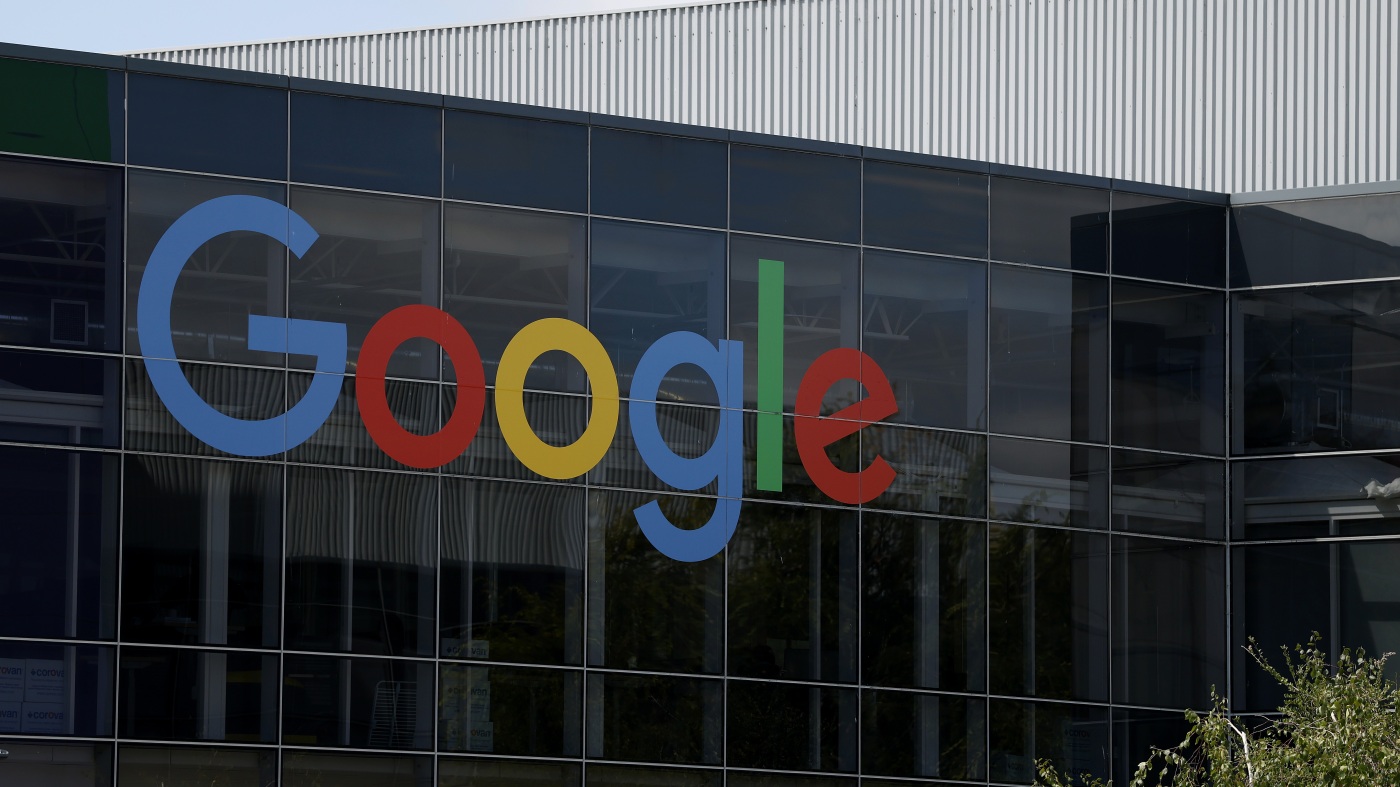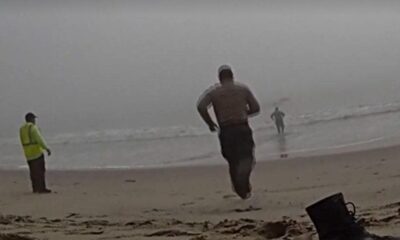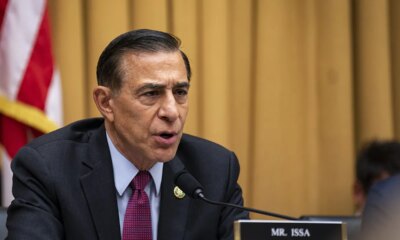News
What Causes California Fires? Power Lines Can Be a Contributor.

Investigators are still working to identify what caused the spate of fires that ignited around Los Angeles last week, but residents are concerned that electrical infrastructure may have sparked at least one of them.
Since 1992, more than 3,600 wildfires in California have been related to power generation, transmission and distribution, according to data from the U.S. Forest Service. Some of the most destructive fires have been traced back to problems with utility poles and power lines.
Roughly a dozen power line fires have burned more than 200,000 acres in areas northwest of the city since 1970.
Source: CalFire
Extents of recent fires, as of Jan. 13, are outlined in black. By The New York Times
Extent of power line fires near Los Angeles
CalFire releases data on past large wildfires and determines their causes in different natural and human-related categories, such as lightning or arson. The agency lists more than 12,500 fires since the late 1800s, though the causes of more than half are unknown or unidentified.
Lightning and use of equipment are among the most common known causes, but over the past few decades, the share of fires known to be caused by power infrastructure has grown across the state.
At least eight of California’s most destructive wildfires had power-related causes. Those fires are shown in bold. Source: CalFire
By The New York Times
The 20 most destructive California wildfires
Residents of Altadena, Calif., sued Southern California Edison on Monday, saying the utility’s electrical equipment set off the Eaton fire, which has burned more than 13,000 acres and 5,000 structures in the city and neighboring areas. The company has said it is investigating the fire’s origin.
Power distribution lines were found to have caused some of California’s largest-ever fires in recent years.
The Thomas fire in 2017 was started when high winds forced Southern California Edison’s power lines to collide, a situation known as “line slap.” Burning material fell to the ground in the Upper Anlauf Canyon, about 35 miles from the current Palisades fire, and the resulting fire burned for almost 40 days.
The 2018 Camp fire, in Northern California, started when an electrical arc between one of Pacific Gas & Electric’s power lines and a steel tower sent molten metal onto the underlying vegetation. That fire claimed more than 80 lives and destroyed over 18,000 structures.
In the summer of 2021, California’s largest single-source wildfire, the Dixie fire, started when a tree made contact with several of PG&E’s distribution lines near the Cresta Dam in Northern California. Electricity continued flowing in one of the lines, which started the fire, and nearly a million acres across four counties burned.
California isn’t the only state dealing with power-related wildfires in recent years. Texas’ largest wildfire, the Smokehouse Creek fire, burned over a million acres in 2024. Xcel Energy accepted responsibility for the fire after investigators found that high winds had broken a utility pole, causing a power line to fall and ignite the dried grasses below.
Similar situations have caused wildfires in Oregon as well. The 2020 Labor Day fires destroyed thousands of homes and killed at least nine people, in part, after power wasn’t shut down during high winds.

News
Video: First Batch of Epstein Files Provides Few Revelations

new video loaded: First Batch of Epstein Files Provides Few Revelations
transcript
transcript
First Batch of Epstein Files Provides Few Revelations
The Justice Department, under pressure from Congress to comply with a law signed by President Trump, released more than 13,000 files on Friday arising from investigations into Jeffrey Epstein.
-
Put out the files and stop redacting names that don’t need to be redacted. It’s just — who are we trying to protect? Are we protecting the survivors? Or are we protecting these elite men that need to be put out there?

By McKinnon de Kuyper
December 20, 2025
News
Apple, Google tell workers on visas to avoid leaving the U.S. amid Trump immigration crackdown

With reported months-long consulate and embassy delays, Google and Apple say employees on H-1B visas should stay put in the U.S. right now to avoid the risk of getting stranded abroad. The latter tech company’s headquarters campus is seen in Mountain View, Calif.
Justin Sullivan/Getty Images
hide caption
toggle caption
Justin Sullivan/Getty Images
Apple and Google are warning some U.S-based employees on visas against traveling outside of the country to avoid the risk of getting stuck coming back, as the Trump administration toughens vetting of visa applicants, according to recent internal memos from the tech companies that were reviewed by NPR.
U.S. consulates and embassies have been reporting lengthy, sometimes months-long delays, for visa appointments following new rules from the Department of Homeland Security requiring travelers to undergo a screening of up to five years’ of their social media history — a move criticized by free speech advocates as a privacy invasion.
For Apple and Google, which together employ more than 300,000 employees and rely heavily on highly-skilled foreign workers, the increased vetting and reports of extended delays were enough for the companies to tell some of their staff to stay in the U.S. if they are able to avoid foreign travel.
“We recommend avoiding international travel at this time as you risk an extended stay outside of the U.S.,” Berry Appleman & Leiden, a law firm that works with Google, wrote to employees.

The law firm Fragomen, which works with Apple, wrote a similar message: “Given the recent updates and the possibility of unpredictable, extended delays when returning to the U.S., we strongly recommend that employees without a valid H-1B visa stamp avoid international travel for now,” the memo read. “If travel cannot be postponed, employees should connect with Apple Immigration and Fragomen in advance to discuss the risks.”
Apple and Google declined to comment on the advisories, which were first reported by Business Insider.

It’s the latest sign of how the Trump administration’s aggressive immigration policies are affecting the foreign-born workforce in the U.S.
Earlier this year, the White House announced that companies will be subjected to a $100,000 fee for all new H-1B visas, a type of visa popular among tech companies eager to hire highly skilled workers from abroad.
H-1Bs typically last three years, and applicants have to return to an embassy or consulate in their home country for a renewal, but reports suggest such a routine trip could lead to people being stranded for months as a result of the Trump administration’s new policies.
On Friday, The Washington Post reported that hundreds of visa holders who traveled to India to renew their H-1Bs had their appointments postponed with the State Department explaining that officials needed more time to ensure that no applicants “pose a threat to U.S. national security or public safety.”
At Google, the Alphabet Workers’ Union has been campaigning for additional protections for workers on H-1B visas. Those workers would be particularly vulnerable in the event Google carried out layoffs, since losing employer sponsorship could jeopardize their legal status, said Google software engineer Parul Koul, who leads the union.
The need to support H-1B holders at Google, she said, has “only become more urgent with all the scrutiny and heightened vetting by the Trump administration around the H1B program, and how the administration is coming for all other types of immigrant workers.”
News
U.S. launches strikes in Syria targeting Islamic State fighters after American deaths

President Donald Trump and Defense Secretary Pete Hegseth salute as carry teams move the transfer cases with the remains of Iowa National Guard soldiers Sgt. William Nathaniel Howard, 29, of Marshalltown, Iowa, and Sgt. Edgar Brian Torres-Tovar, 25, of Des Moines, Iowa, and civilian interpreter Ayad Mansoor Sakat, who were killed in an attack in Syria, during a casualty return, Wednesday, Dec. 17, 2025 at Dover Air Force Base, Del.
Julia Demaree Nikhinson/AP
hide caption
toggle caption
Julia Demaree Nikhinson/AP
WASHINGTON — The Trump administration launched military strikes Friday in Syria to “eliminate” Islamic State group fighters and weapons sites in retaliation for an ambush attack that killed two U.S. troops and an American civilian interpreter almost a week ago.

A U.S. official described it as “a large-scale” strike that hit 70 targets in areas across central Syria that had IS infrastructure and weapons. Another U.S. official, who also spoke on condition of anonymity to discuss sensitive operations, said more strikes should be expected.
“This is not the beginning of a war — it is a declaration of vengeance. The United States of America, under President Trump’s leadership, will never hesitate and never relent to defend our people,” Defense Secretary Pete Hegseth said on social media.
The new military operation in Syria comes even as the Trump administration has said it’s looking to focus closer to home in the Western Hemisphere, building up an armada in the Caribbean Sea as it targets alleged drug-smuggling boats and vowing to keep seizing sanctioned oil tankers as part of a pressure campaign on Venezuela’s leader. The U.S. has shifted significant resources away from the Middle East to further those goals: Its most advanced aircraft carrier arrived in South American waters last month from the Mediterranean Sea.

Trump vowed retaliation
President Donald Trump pledged “very serious retaliation” after the shooting in the Syrian desert, for which he blamed IS. Those killed were among hundreds of U.S. troops deployed in eastern Syria as part of a coalition fighting the militant group.
During a speech in North Carolina on Friday evening, the president hailed the operation as a “massive strike” that took out the “ISIS thugs in Syria who were trying to regroup.”
Earlier, in his social media post, he reiterated his backing for Syrian President Ahmad al-Sharaa, who Trump said was “fully in support” of the U.S. effort.
Trump also offered an all-caps threat, warning IS against attacking American personnel again.
“All terrorists who are evil enough to attack Americans are hereby warned — YOU WILL BE HIT HARDER THAN YOU HAVE EVER BEEN HIT BEFORE IF YOU, IN ANY WAY, ATTACK OR THREATEN THE U.S.A.,” the president added.
The attack was conducted using F-15 Eagle jets, A-10 Thunderbolt ground attack aircraft and AH-64 Apache helicopters, the U.S. officials said. F-16 fighter jets from Jordan and HIMARS rocket artillery also were used, one official added.
U.S. Central Command, which oversees the region, said in a social media post that American jets, helicopters and artillery employed more than 100 precision munitions on Syrian targets.
How Syria has responded
The attack was a major test for the warming ties between the United States and Syria since the ouster of autocratic leader Bashar Assad a year ago. Trump has stressed that Syria was fighting alongside U.S. troops and said al-Sharaa was “extremely angry and disturbed by this attack,” which came as the U.S. military is expanding its cooperation with Syrian security forces.

Syria’s foreign ministry in a statement on X following the launch of U.S. strikes said that last week’s attack “underscores the urgent necessity of strengthening international cooperation to combat terrorism in all its forms” and that Syria is committed “to fighting ISIS and ensuring that it has no safe havens on Syrian territory and will continue to intensify military operations against it wherever it poses a threat.”
Syrian state television reported that the U.S. strikes hit targets in rural areas of Deir ez-Zor and Raqqa provinces and in the Jabal al-Amour area near the historic city of Palmyra. It said they targeted “weapons storage sites and headquarters used by ISIS as launching points for its operations in the region.”
IS has not said it carried out the attack on the U.S. service members, but the group has claimed responsibility for two attacks on Syrian security forces since, one of which killed four Syrian soldiers in Idlib province. The group in its statements described al-Sharaa’s government and army as “apostates.” While al-Sharaa once led a group affiliated with al-Qaida, he has had a long-running enmity with IS.
The Americans who were killed
Trump this week met privately with the families of the slain Americans at Dover Air Force Base in Delaware before he joined top military officials and other dignitaries on the tarmac for the dignified transfer, a solemn and largely silent ritual honoring U.S. service members killed in action.
The guardsmen killed in Syria last Saturday were Sgt. Edgar Brian Torres-Tovar, 25, of Des Moines, and Sgt. William Nathaniel Howard, 29, of Marshalltown. Ayad Mansoor Sakat, of Macomb, Michigan, a U.S. civilian working as an interpreter, also was killed.
The shooting near Palmyra also wounded three other U.S. troops as well as members of Syria’s security forces, and the gunman was killed. The assailant had joined Syria’s internal security forces as a base security guard two months ago and recently was reassigned because of suspicions that he might be affiliated with IS, Interior Ministry spokesperson Nour al-Din al-Baba has said.
The man stormed a meeting between U.S. and Syrian security officials who were having lunch together and opened fire after clashing with Syrian guards.
-

 Iowa6 days ago
Iowa6 days agoAddy Brown motivated to step up in Audi Crooks’ absence vs. UNI
-

 Iowa1 week ago
Iowa1 week agoHow much snow did Iowa get? See Iowa’s latest snowfall totals
-

 Maine4 days ago
Maine4 days agoElementary-aged student killed in school bus crash in southern Maine
-

 Maryland6 days ago
Maryland6 days agoFrigid temperatures to start the week in Maryland
-

 Technology1 week ago
Technology1 week agoThe Game Awards are losing their luster
-

 South Dakota6 days ago
South Dakota6 days agoNature: Snow in South Dakota
-

 New Mexico4 days ago
New Mexico4 days agoFamily clarifies why they believe missing New Mexico man is dead
-

 World1 week ago
World1 week agoCoalition of the Willing calls for transatlantic unity for Ukraine























